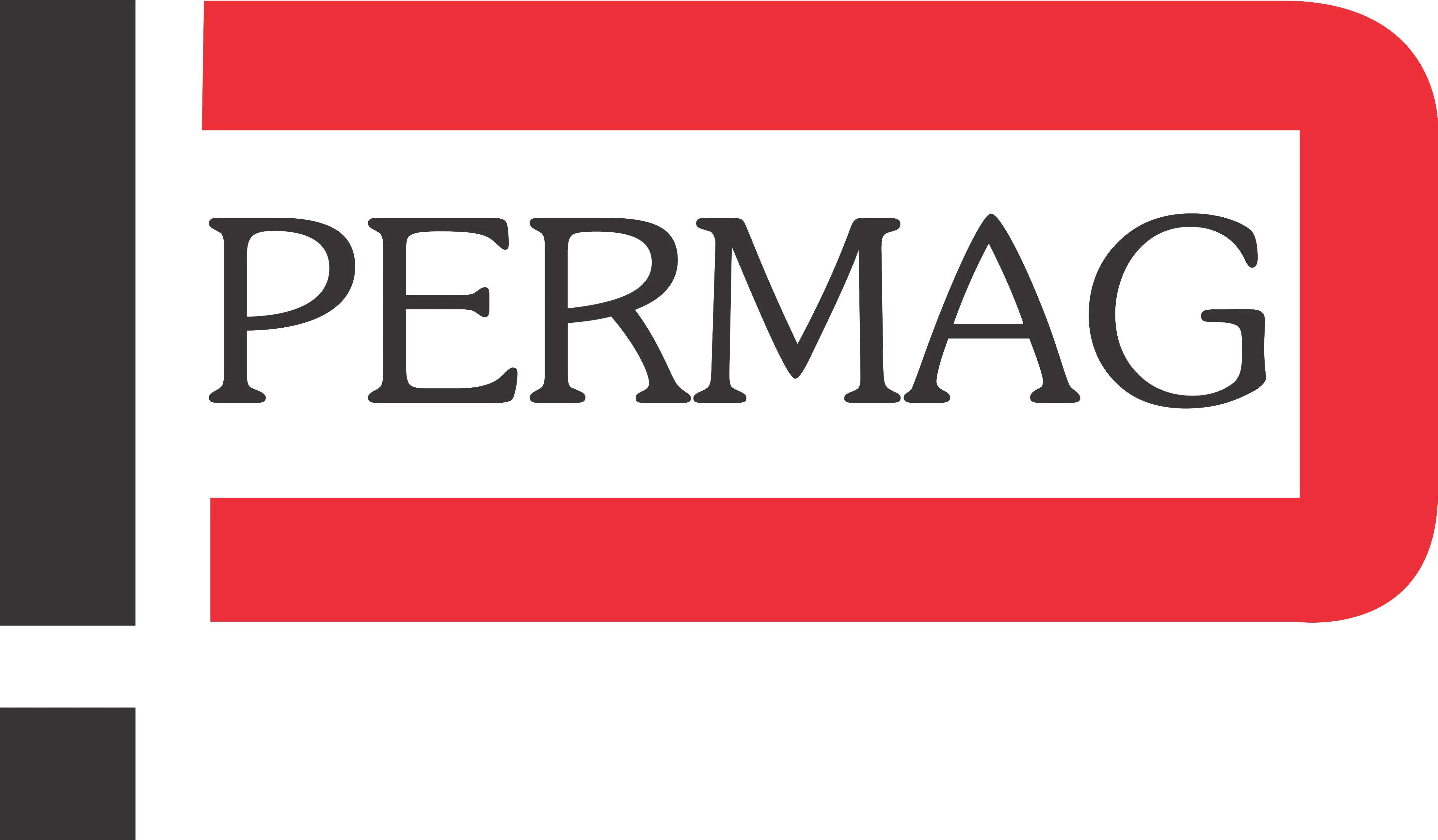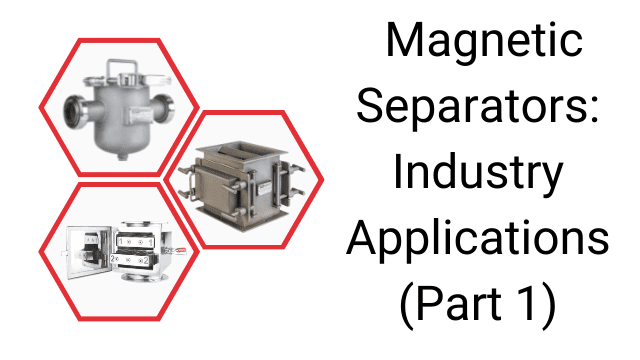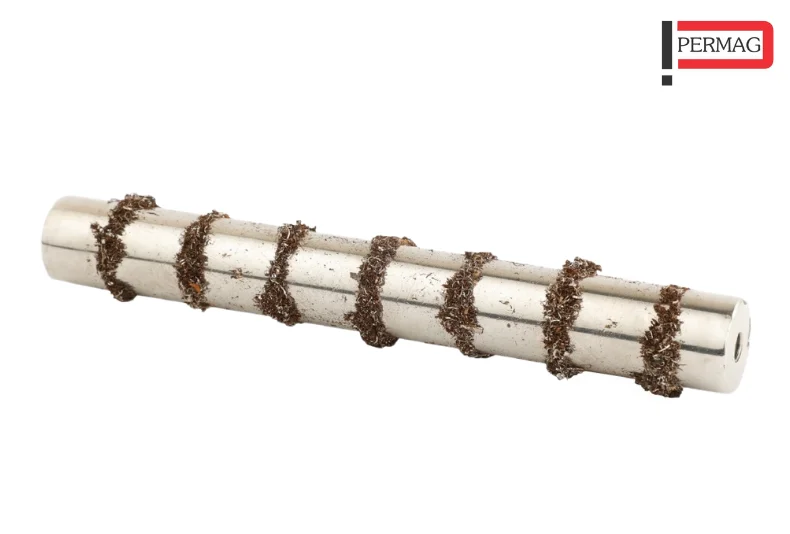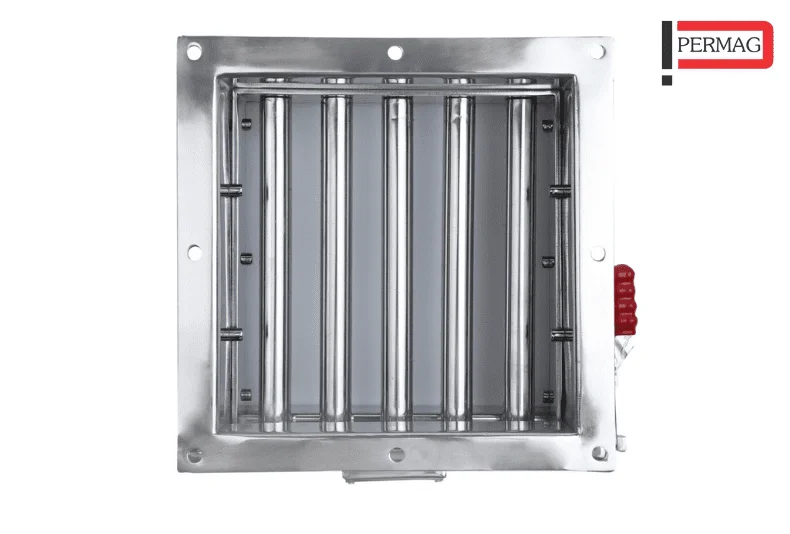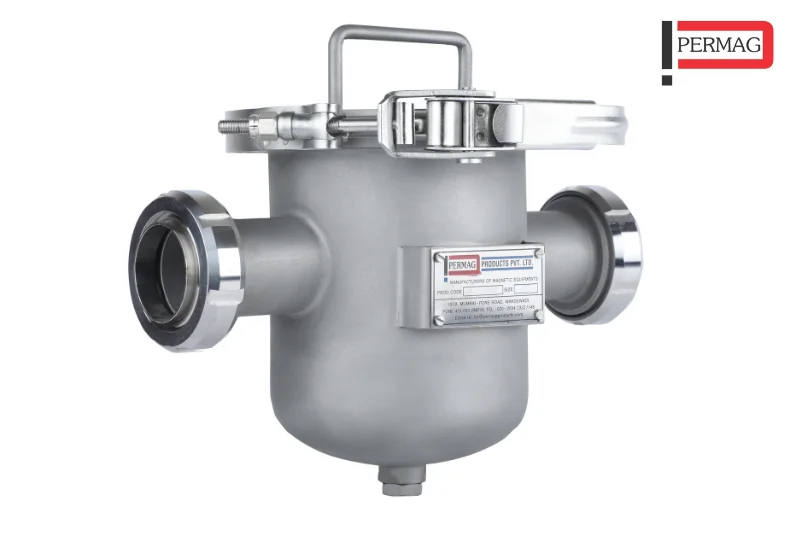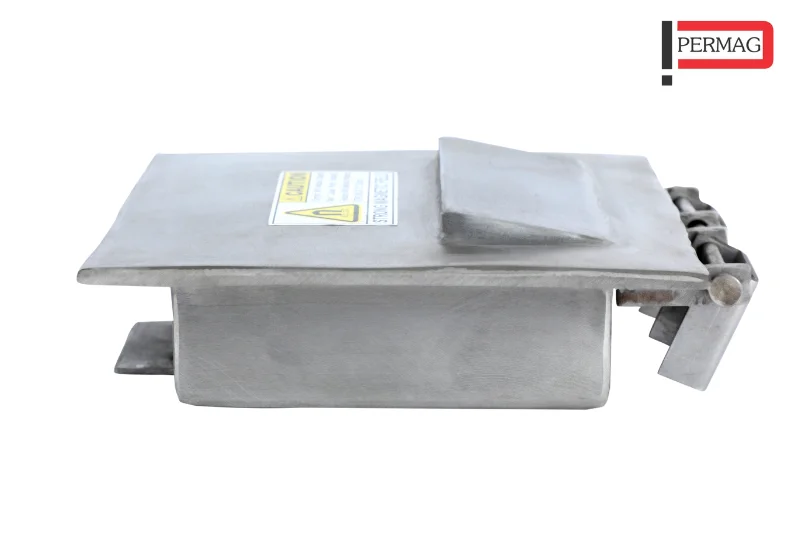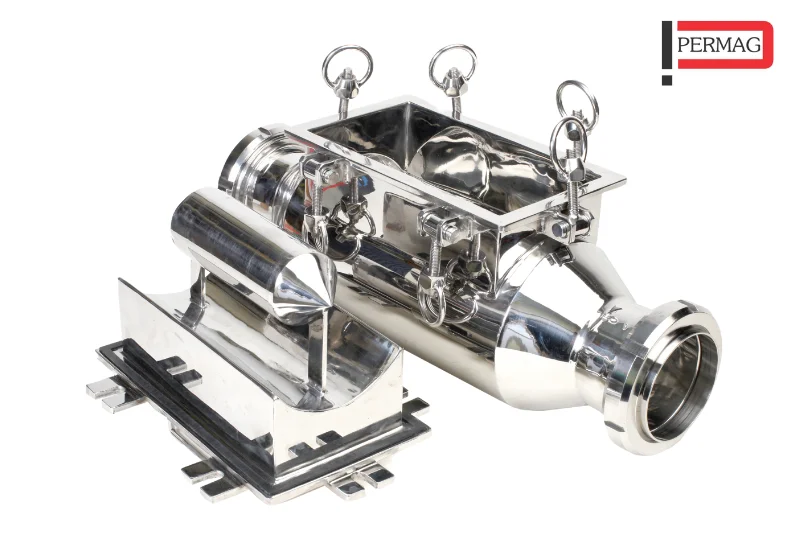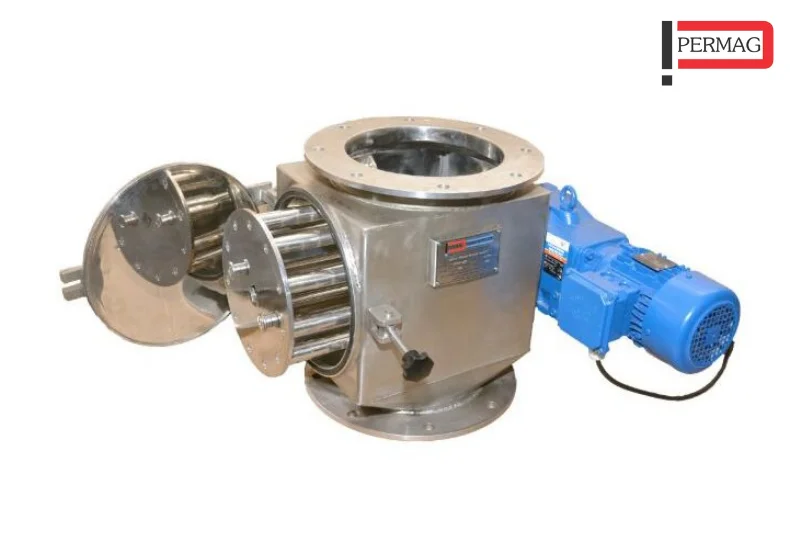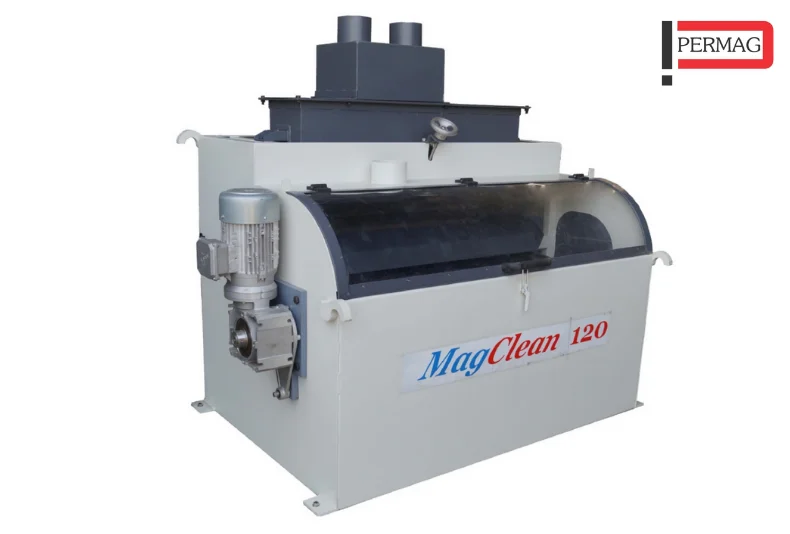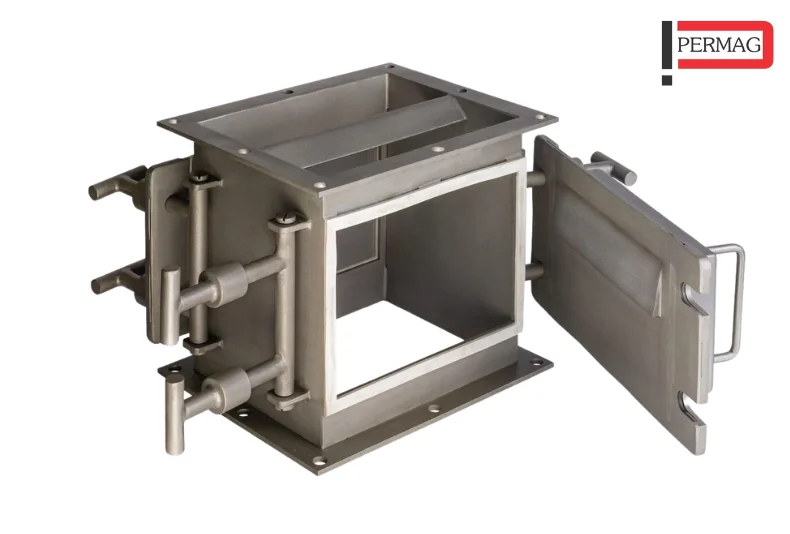Introduction to Magnetic Separators
Magnetic Separators find uses in many industries such as the food and beverage industry, pharmaceutical industry, chemical industry, plastic industry, automobile industry and more. Magnetic separation is often overlooked and taken for granted, but it protects the final product from contamination and the machines from damage by tramp iron (nuts, bolts). It is a reliable and cost-effective long term solution that can help you save Lakhs of Rupees on machine repairs and maintenance.
Applications of magnetic separators
Magnetic Separators in Food processing industry
Magnetic separators should be installed at certain strategic locations for food processing industry. They are needed to remove larger contaminants such as nuts, bolts and screws as well as ferrous particles as small as 30 microns and tiny paramagnetic particles such as stainless steel scrapings from worn equipment. Some of the separators used are:
Magnetic Rods –
Used as a simple, low-cost form of separation used in gravity free-fall magnetic separation applications. Used for tramp iron separation as well as fine ferrous contaminations. For a detailed specification chart, click here.
Magnetic Grill –
A magnetic grill can be installed in hoppers, pits, chutes, housing and bins, where it can be easily accessed for cleaning. A magnetic grill is most effective when the product is dry, free-flowing and does not bridge between magnetic tubes. For a detailed specification chart, click here.
Magnetic T traps –
Magnetic T traps are designed to operate in pressurized transfer lines to provide protection against ferrous and paramagnetic contamination. It is used in liquids and slurry lines to remove fine contaminants as small as 30 microns. Click here to know more about specifications.
Plate Magnet –
Plate magnet works to capture fine metal particles and slightly magnetic debris from powdery, moist or abrasive materials that might choke or wear cartridge-based separators. Plate magnet is commonly installed in chutes, above conveyors or below conveyor drive pulleys. For a detailed specification chart, click here.
Bullet Magnet –
Bullet magnet is designed with an aerodynamic shape to remove maximum ferrous contamination in pneumatic lines without obstructing the flow.It is ideal for gravity and pneumatically conveyed pipelines. Click here to know more.Rotary magnet –
Rotary magnet is used in vertical process lines for the extraction of ferrous particles from substances prone to bridging or caking. Click here to know more about the specifications.
Rare earth roll separators –
Rare earth roll separators provide a unique inclined belt feeding system to maximize overall performance and efficiency. It provides an alternative to handling a wide variety of materials which do not respond well to traditional methods of processing. Detailed specifications are mentioned here.
Magnetic Separators in Chemical Industry
Magnetic separators are used for extracting fine ferrous particles from powdered chemicals, pellet chemicals, tablets or pastes. Typical locations for instalment are gravity-fed chutes, pre and post mixers, paste mixing, etc. Some of the separators used are:
Magnetic Rods –
Used as a simple, low-cost form of separation used in gravity free-fall magnetic separation applications. Used for tramp iron separation as well as fine ferrous contaminations. For a detailed specification chart, click here.
Deep reach Magnetic Separator –
Deep reach magnetic separator consists of two plate magnets in a housing compartment. It works very effectively for sticky products that do not flow readily. It removes fine ferrous and tramp iron contamination. Click here for detailed information on specifications.
Magnetic T traps –
Magnetic T traps are designed to operate in pressurized transfer lines to provide protection against ferrous and paramagnetic contamination. It is used in liquids and slurry lines to remove fine contaminants as small as 30 microns. Click here to know more about specifications.
Magnetic Grill –
A magnetic grill can be installed in hoppers, pits, chutes, housing and bins, where it can be easily accessed for cleaning. A magnetic grill is most effective when the product is dry, free-flowing and does not bridge between magnetic tubes. For a detailed specification chart, click here.
Bullet Magnet –
Bullet magnet is designed with an aerodynamic shape to remove maximum ferrous contamination in pneumatic lines without obstructing the flow. It is ideal for gravity and pneumatically conveyed pipelines. Click here to know more.Plate Magnet –
Plate magnet works to capture fine metal particles and slightly magnetic debris from powdery, moist or abrasive materials that might choke or wear cartridge-based separators. Plate magnet is commonly installed in chutes, above conveyors or below conveyor drive pulleys. For a detailed specification chart, click here.
Rare earth roll separators –
Rare earth roll separators provide a unique inclined belt feeding system to maximize overall performance and efficiency. It provides an alternative to handling a wide variety of materials which do not respond well to traditional methods of processing. Detailed specifications are mentioned here.
Rotary magnet –
Rotary magnet is used in vertical process lines for the extraction of ferrous particles from substances prone to bridging or caking. Click here to know more about the specifications.
Magnetic Separators in pharmaceutical industry
Magnetic separators are used at all stages in the pharmaceutical industry, from processing the raw material to filtering the finished product. Equipment such as grinders could be seriously damaged due to random metal scrap that could pass through. Separators are used for powders, granules, slurries and pastes. Some of the separators used are:
Magnetic Rods –
Used as a simple, low-cost form of separation used in gravity free-fall magnetic separation applications. Used for tramp iron separation as well as fine ferrous contaminations. For a detailed specification chart, click here.
Deep reach Magnetic Separator –
Deep reach magnetic separator consists of two plate magnets in a housing compartment. It works very effectively for sticky products that do not flow readily. It removes fine ferrous and tramp iron contamination. Click here for detailed information on specifications.
Magnetic T traps –
Magnetic T traps are designed to operate in pressurized transfer lines to provide protection against ferrous and paramagnetic contamination. It is used in liquids and slurry lines to remove fine contaminants as small as 30 microns. Click here to know more about specifications.
Magnetic Grill –
A magnetic grill can be installed in hoppers, pits, chutes, housing and bins, where it can be easily accessed for cleaning. A magnetic grill is most effective when the product is dry, free-flowing and does not bridge between magnetic tubes. For a detailed specification chart, click here.
Bullet Magnet –
Bullet magnet is designed with an aerodynamic shape to remove maximum ferrous contamination in pneumatic lines without obstructing the flow. It is ideal for gravity and pneumatically conveyed pipelines. Click here to know more.
Plate Magnet –
Plate magnet works to capture fine metal particles and slightly magnetic debris from powdery, moist or abrasive materials that might choke or wear cartridge-based separators. Plate magnet is commonly installed in chutes, above conveyors or below conveyor drive pulleys. For a detailed specification chart, click here.
Conclusion
Magnetic separators find applications in different industries according to the material being filtered, contamination being separated, etc. You need to carefully choose the magnetic separators required according to your unique circumstances. It might be wise to look into conducting an inspection.
Permag Products has been in the magnetic industry since its inception in 1985. The industry has consistently recognized it as a pioneer and problem solver. It has developed distinctive and customized solutions for leading players across sectors such as ITC, Hindustan Unilever, Pepsico, Ranbaxy, Abbott, etc.
